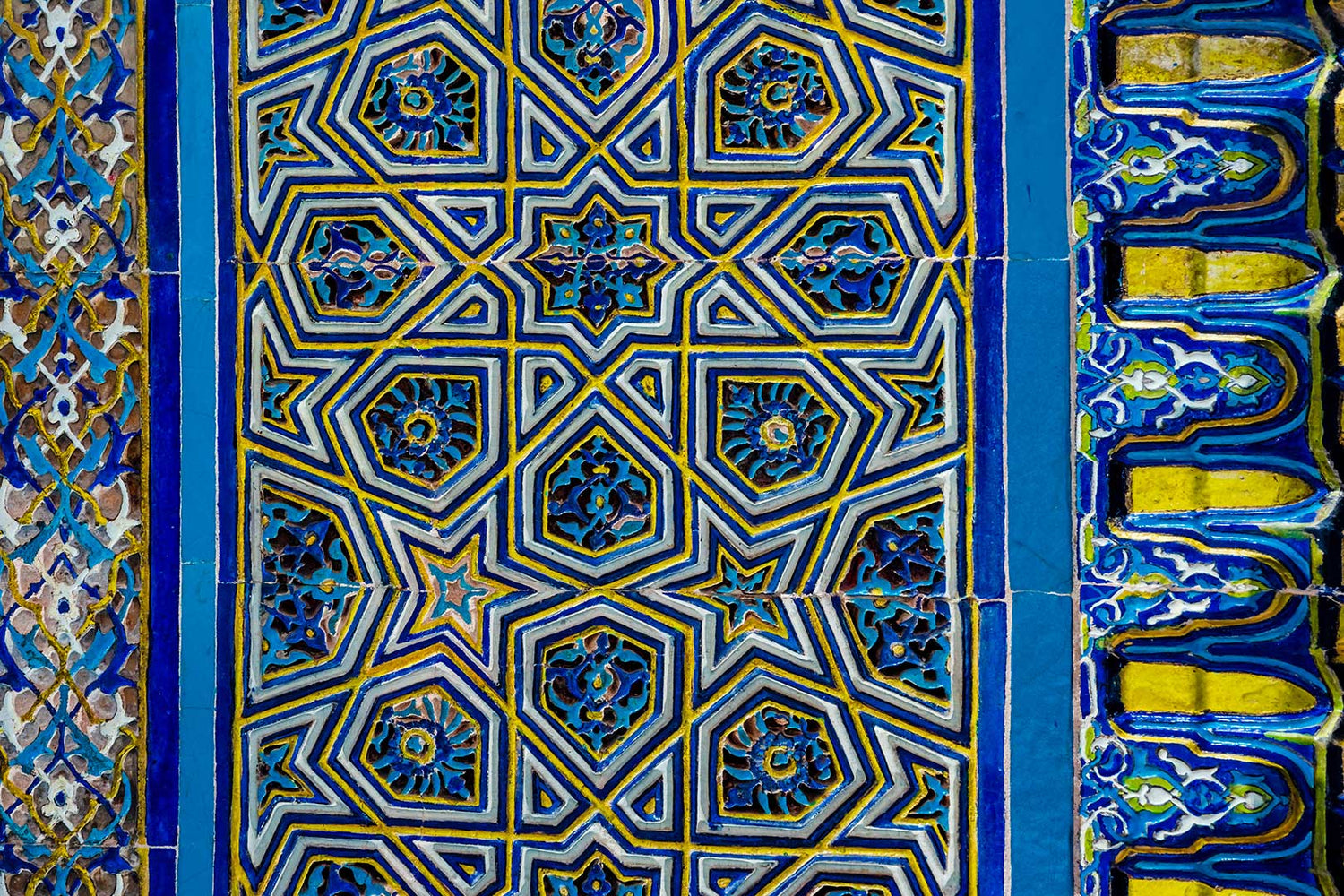The 1510s are dominated by the campaigns of Selim I, which saw the temporary conquest of Tabriz and the definitive capture of Damascus and Cairo. Selim's reign was brief, and the campaigns left him no opportunity for artistic patronage. His reign had little impact in terms of output; architectural activity was minimal, and there were no major changes in style, technique, or quantity in the minor arts. However, its long-term contribution was significant, as Istanbul was enriched by the spoils of Selim's victories. This spoils included both people and goods, and opened the doors of Ottoman art, including ceramics, to new influences and new ideas.
From Tabriz, Selim brought at least two tile cutters. In a document dated 932/1525 by Abd al-Razzak and Burhan, Habib of Tabriz is listed as a "ser kâşigeran" (a master kashif) with ten apprentices of various origins. Habib had been receiving wages since at least 1523. After a hiatus of some ninety years, this workshop, run by Tabrizis, reintroduced for the first time the colored glaze (cuerda seca) technique, which had been introduced to Türkiye by earlier Tabrizi masters and disappeared from the Ottoman tile repertoire after the Muradiye Mosque in Bursa in 1430. The workshop was responsible for all the surviving tile structures of the sultanate until the Süleymaniye Mosque, built in the 1550s. The close artistic and technical connections between the İznik tile kilns specializing in underglaze techniques and this colored glaze are unclear, but overall, tiles benefited İznik tilemakers by becoming a central part of imperial architecture. Although the colored glaze technique remained dominant until the 1550s, there were also signs of a significant increase in underglaze tile production. The revival of interest in tiles, after a hiatus of approximately thirty years between 1479 and 1506-7, undoubtedly benefited İznik ceramicists by providing them with a second branch of production.
Selim brought 38 master artists from Tabriz, including 16 miniaturists. The most influential of these arrivals, as we will see later, was Şahkulu, who introduced a completely new decorative style in the second quarter of the 16th century and would be appointed palace nakkaş (miniaturist) in 932/1526. Although the credit for bringing in these artists must belong to Selim, the contributions of the miniaturist Şahkulu and the tile maker Habib only became apparent in the first decade of the reign of Suleiman the Magnificent. The same applies to Chinese porcelain, another significant influence on Ottoman tilemaking. Among the spoils Selim took from Tabriz, 64 pieces of Chinese porcelain from the Hasht Behesht palace are recorded. An unspecified number of Chinese porcelains were also brought from Cairo. Regardless of the number of pieces, the quality of those brought from the Safavid and Mamluk palaces must have been very impressive. It is not surprising that, in the 1520s, when Ottoman tile makers began to respond systematically to Chinese porcelain, their attention was focused on 14th- and early 15th-century antiques rather than on contemporary trade goods.
In the longer term, Selim's conquests were significant because they provided the Ottomans with access to the Indian Ocean and thus a closer connection to the western end of the porcelain trade route. This would have encouraged the import of Chinese porcelain to Istanbul. However, unlike the 14th- and 15th-century ceramics that, as we will see, would play a crucial role in the later development of Ottoman tilemaking, the 16th- and 17th-century imports had little impact on the decorative ambitions of contemporary İznik tiles. Indeed, they ultimately had a negative impact on the commercial viability of İznik ceramics.
All of these were long-term aspects of the Selim period. The 1510s witnessed a sustained period of ceramic production, the most significant of which was the expansion of the market base. The trend toward publicization manifested itself in several factors. One of these was the expansion of distribution, both geographically and socially ('İznik', Nurhan Atasoy and Julian Raby, pp. 96-98).




